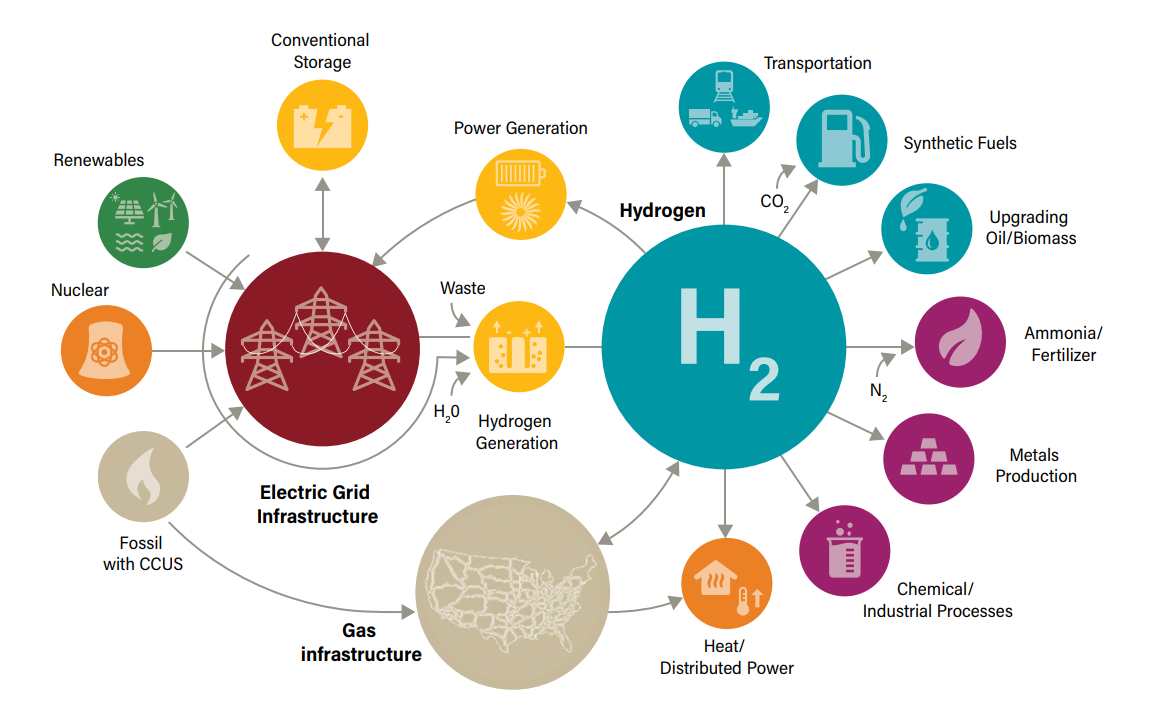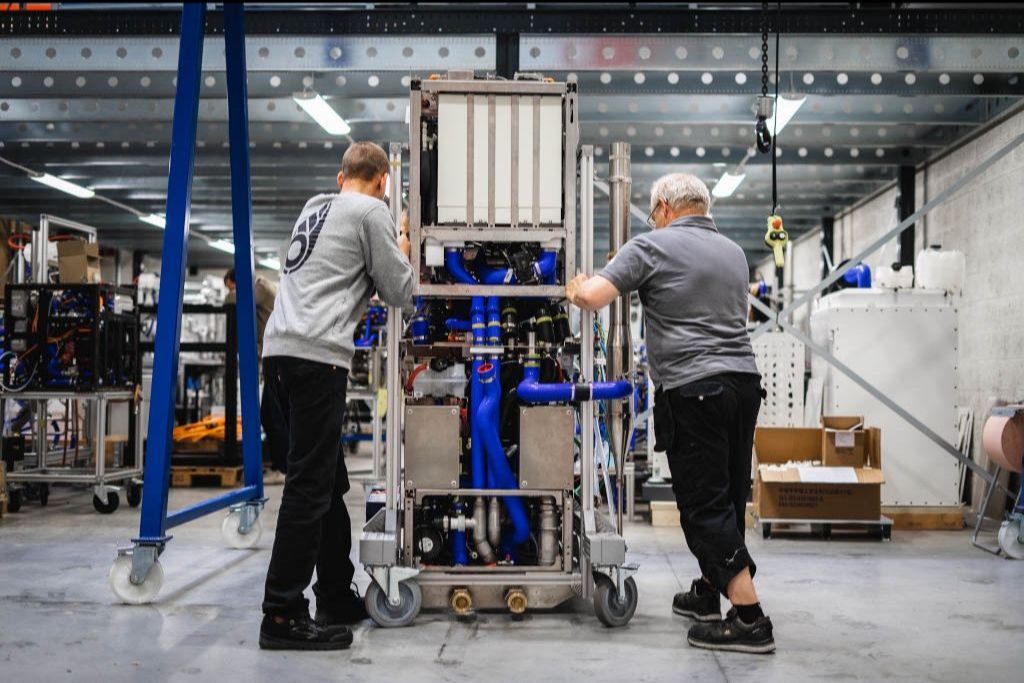Despite the political upheavels of Brexit, the British Government says it is still pushing to meet its decarbonisation goals. It too sees hydorgen as a pathway to get to meet them, and it too needs local heroes to fill in the gaps to get the job done.
Samantha Fisk and Craig Eason lift the lid on how big politics and local heroes need each other.
The Hydrogen Economy race has started and the UK wants to be at the front of the pack. The European union recently put many of its clean energy eggs squarely into the hydrogen basket as it announced a green deal and then a COvid-19 recovery package that would be based around that deal. The UK, which is now withdrawing from the Union and will have done so by the end of the year, is forging its own hydrogen path. Its success will rely on entrepreneurship and strong government strategies and support. The latter has been in the making.
The British Government has made various proclamations about a maritime zero-emission travel strategy and plans to build hydrogen production plants to help with a general decarbonisation plan.
National plans, local heroes
The ability to supply national hydrogen resources will help entrepreneurial businesses move towards clean energy sources and develop new products, such as hydrogen powered small vessels, which is what Devon, UK-based Patriot Yachts is hoping to do.
There are plans for three passenger vessels. One is a 50m passenger vessel with the capacity of 500 to 700 people that will run between Ilfracombe on the North Devon coast and south Wales. The other two smaller hulls have been built in Turkey and the plan is to run those between Bristol and Cardiff. Work is underway to install hydrogen fuel cells and hydrogen fuel tanks, with work being co-ordinated by the UK’s Maritime and Coastguard Agency,
The man behind the project is Connor Johnson owner and CEO at Patriot Yachts, who was also behind one of the moves to buy the North Devon Appledore Shipyard which closed down last year when its lease with Babcock ended. With regards to using hydrogen as a fuel on a ferry, Johnson knows it is largely untested and has challenges. “The main challenge for producing hydrogen in the UK at the moment is the infrastructure of production plants and refuelling outlets there are some companies that are producing and distributing hydrogen gas, but this are very limited.”
He has plans to build his own local hydrogen production facilities to ensue the local fuel is green rather than from hydrocarbons.
It is this decentralised ability to generate hydrogen using renewable energy such as wind and solar that is making hydrogen and hydrogen-based fuels so attractive both for small scale projects and large scale plants. It gives many countries better control of their own power rather than rely on the potentially politically unstable hydrocarbon markets.
The UK clean energy strategy may on paper promote the political shine of meeting the country’s target’s under the Paris Accord, but it does, like many other countries that are beginning to take a hydrogen path, an opportunity to take control of their own energy resources
Norwegians would
One hydrogen project in the UK that has been announced this year is the Humber Saltend hydrogen production facility by Equinor, the Norwegian energy giant. The project named ‘hydrogen to Humber Saltend’ (H2H Saltend) is part of the UK Government’s plans to create low carbon industrial clusters in the UK.
Equinor is partly owned by the Norwegian government and war until recently known as Statoil (State Oil), becoming Equinor to reflect the company’s move away from fossil fuels.
This is low carbon as the hydrogen will be what is known as brown hydrogen, as opposed to green hydrogen, because the base source will be natural gas.
The company has said the project will be located at Saltend Chemicals Park near the city of Hull with its initial phase comprising of a 600 megawatt auto thermal reformer (ATR), with carbon capture. This would make it the largest plant of its kind in the world converting natural gas to hydrogen.
There has been criticism of the use of natural gas as a hydrogen source, but others have contended that the use of brown hydrogen ( or blue when CCC is used) is a clear steppingstone towards using renewable electricity to create the future volumes of (green) hydrogen needed.
The plant will enable industrial customers in the Park to fully switch over to hydrogen, and the power plant in the Park to move to a 30% hydrogen to natural gas blend. As a result, emissions from Saltend Chemicals Park will reduce by nearly 900,000 tonnes of CO2 per year, Equinor claims.
The H2H Saltend Equinor website also boasts that “H2H Saltend could provide low carbon chemicals to act as marine fuels, making the Port of Hull one of the first in the world to offer low carbon maritime refuelling”. However with the developments being pushed ahead elsewhere in Europe this remains to be seen as more than marketing spin.
More needed
There is the scope for growth in hydrogen, and particularly localised hydrogen production. Johnson plans to build hydrogen plants and open a network in both the aviation and marine industry all over the UK, Wales, Scotland, Eire. He also has plans for hydrogen in aviation.
“The only downside of hydrogen at the moment in the market is the price of production per kilogram to produce hydrogen but with more people building hydrogen production plants globally and the infrastructure of refuelling outlets growing yearly, the price of hydrogen production will go down, making it more affordable for the marine, automotive, aviation industries”, explains Johnson.
The growth of interest has not just been in the maritime market but across other sectors as Johnson highlights. Companies are now not just looking to develop solutions that cater for one market but can work across industries, as they all have the current same goal to meet – to lower emissions.
Johnson notes that as this fuel is developed lessons can be learned across industries about other fuels and battery sources that are coming on to the market such as with battery technology, which although positive, still lack the capacity for moving long distances.
Working in both the aviation and maritime industries, Patriot Yachts believes that hydrogen can overcome this problem whilst still being able to meet emissions targets, as the fuel has the same range and distance capacity as aviation fuel.
“The problem with hydrogen fuel at the moment in the aviation industry is that it is still working on these new methods, there are a few companies that are currently testing hydrogen fuel in used aircraft, but this is not what Patriot Airways, sister company of Patriot Yachts International, is doing”, Johnson says.
Patriot Airways have designed a brand-new twin-propeller business jet for six people using only hydrogen fuel and fuel cells that can be built in the next few years. Johnson adds that the company is then intending to move onto larger aircraft up to 60-80 passengers using the same fuel and power system.
Shipping has been given a negative environmental press for many years. The recently released IMO-backed fourth greenhouse gas report has led its authors to underscore the need for national governments to take a direct approach with national, coastal shipping as its influence is far greater than previously thought.
But while Johnson has high hopes and expectations of his three passenger ferries that will shuttle people across the Bristol Channel in the UK, it does of course remain a question whether the paying public are ready to accept the extra cost for such travel.
But the underlying message may well be that while the UK Government is happy to support high profile hydrogen production plants, it is the local heroes willing to put their neck out that will also need support.

































